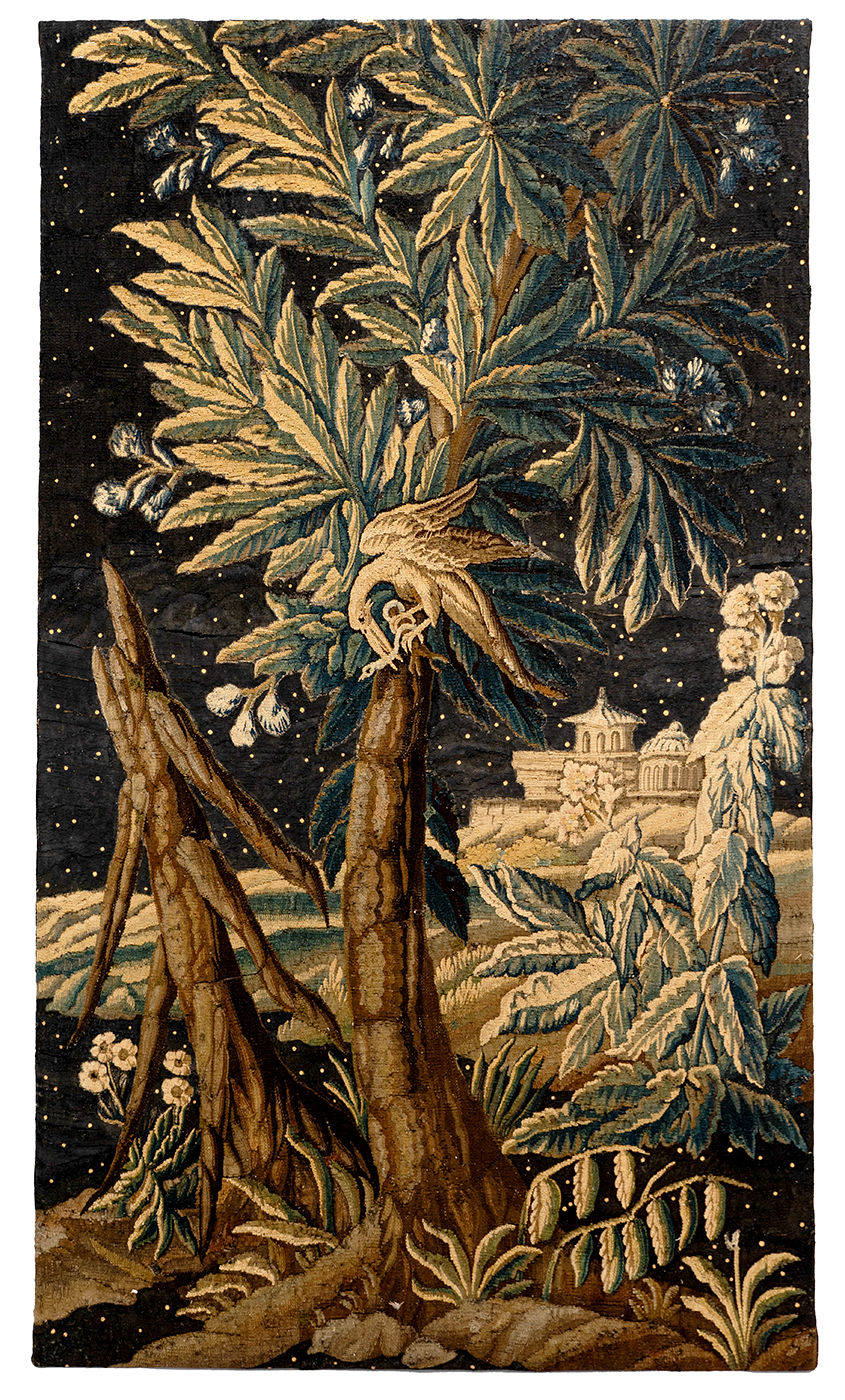Auguste-Dormeuil

Renaud Auguste-Dormeuil
Tapisserie au serpent, 2023
Hope It Was Worth It 4 - 22 juin 1759 : dernière journée de visibilité de la comète de Halley dans le ciel de Lisbonne
Unique artwork
Courtesy de l'artiste & In Situ fabienne leclerc, Grand Paris
Since the Middle Ages, tapestry has been considered a "decorative" art form. However, the practice of tapestry has never ceased to permeate the history of art, enriching it with countless masterpieces. In its golden age, during the Renaissance, illustrious artists such as Raphaël and Poussin helped to give tapestry its rightful place. When the Manufacture des Gobelins was founded in the 17th century, Aubusson's productions also testified to the excellence and influence of this art form.
It is estimated that the production of a square meter of tapestry can take between one and ten months of work, depending on the technique and the finesse of the weave. Therefore, it is easy to imagine that during the long tapestry-making period, while the weavers were working, important events were taking place around the world.
Any journey through art history is no less a journey through human history: the "Hope It Was Worth It" project aims to bring these two stories together, each time confined within the boundaries of a tapestry.
The first step was to acquire a 17th-century Aubusson tapestry at the antique market. Once the tapestry's precise date had been established, a historical event was chosen which took place during its weaving: for this tapestry : June 22, 1759, last day of visibility of Halley's comet in the sky over Lisbon (Portugal).
Then, using software, the artist recomposed the exact map of the London sky as it was visible on the night of the event. Following the outline of the map, this sky is reproduced by hand, point by point and star by star on the tapestry. The "dated" sky is thus superimposed over the sky already present in the piece. In this way, the artist integrates a historical event contemporary with its manufacture directly into the weave and material of the tapestry.
Like a palimpsest, this dye on the weave invites history to enter the frame.